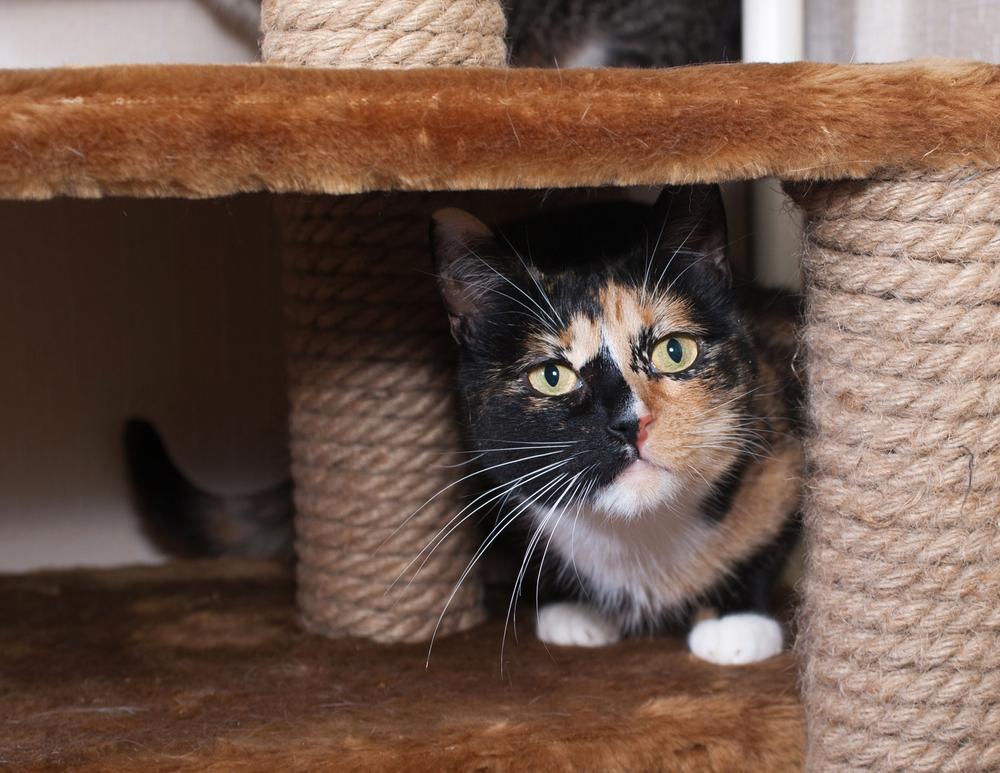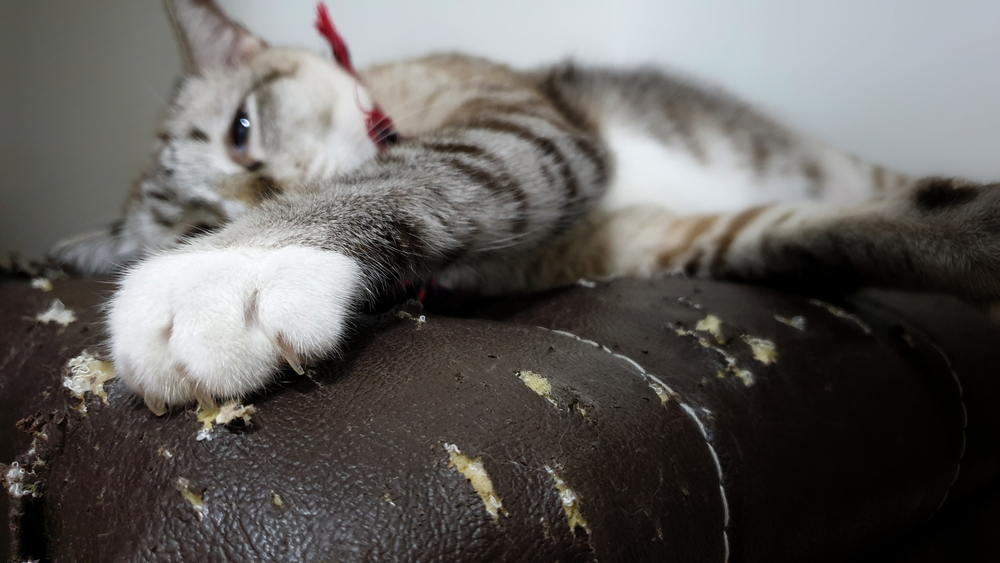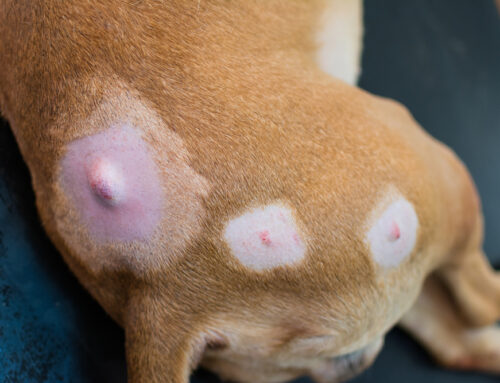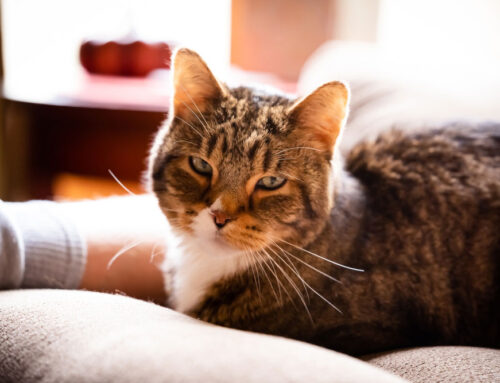Cats are genetically predisposed to scratch, and the behavior is important for their mental and physical health. However, you may be frustrated if your cat is destroying your furniture or carpets. Our Oliver Animal Hospital south Austin veterinarians explain why cats scratch and how to redirect your feline friend’s scratching behavior to salvage your household items and personal belongings.
Reasons your cat scratches
Scratching is important to your feline friend’s mental and physical health. Cats scratch for numerous reasons, including:
- Paw health — Scratching helps keep your cat’s paws healthy and strong.
- Nail maintenance — Scratching loosens and removes the outer claw husk to keep nails sharp and healthy.
- Stretching — Scratching helps your cat stretch their forelimb and spinal muscles.
- Communication — When your cat scratches, they leave their scent, allowing them to communicate with other cats in the area.
- Anxiety relief — When anxious, many cats scratch to soothe themselves.
- Boredom relief — Cats may scratch to relieve boredom if they don’t receive proper enrichment.
Cat scratching styles
Cats have different scratching styles. Determining your feline friend’s preferred scratching behavior can help you provide them with scratching posts they will actually use. Consider these feline scratching styles:
- Position — If your cat likes to scratch sofa arms, chair backs, and curtains, they are a vertical scratcher and will likely prefer a scratching post that allows them to stand on their hind limbs as they scratch. If your cat likes to scratch carpets or throw rugs, they are a horizontal scratcher and will likely prefer flat scratching surfaces.
- Material — Scratching posts are made from various materials, including cardboard, carpet, sisal rope, and wood. Offer your cat various scratching post materials to determine their preferred texture.
Trimming your cat’s claws
Cats need their claws trimmed about every 10 to 14 days. Trimming their claws won’t prevent your feline friend from scratching, but it can reduce their need to scratch and helps decrease the damage sharp claws cause. If your cat isn’t cooperative for this procedure, our Oliver Animal Hospital south Austin veterinarians can provide a demonstration or perform the task for you. To safely trim your cat’s claws, follow these tips:
- Restrain your cat — Each cat is different, and you must determine the best nail trimming approach for your feline friend. Some cats do better if you trim their claws while they sleep, while others need to be wrapped in a towel for the procedure. Having someone to hold your cat may facilitate the process.
- Use the appropriate tool — Use trimmers specifically designed to clip a cat’s claws, and to avoid causing pain or splitting the nail, ensure the trimmers are sharp.
- Trim only a bit — Cutting into the nail’s quick causes pain and bleeding. Extend your cat’s claw by putting gentle pressure on their pad, and only trim the white area.
- Be patient — Avoid trying to trim all your cat’s claws during one session. Most cats only tolerate two or three at a time.
- Give your cat a treat — Give your cat a treat after each nail-trimming session to make the experience positive.
Tips to prevent destructive cat scratching
Cats are genetically predisposed to scratch, and the behavior is important for their mental and physical health. However, you must train your feline friend to scratch appropriately. To help prevent your cat from destructive scratching, follow these tips:
- Provide many scratching options — Provide scratching posts throughout your home so your cat has acceptable places to scratch. If you have multiple cats, provide at least two scratching options for each cat.
- Determine your cat’s preferred scratching position and material — After determining your cat’s preferred scratching position and material, provide them with scratching posts that meet these specifications. You can also provide different scratching post types or posts that allow your cat to scratch in various positions.
- Place the cat scratching posts in the right location — Place posts near your cat’s preferred resting places. If your cat scratches your sofa, place a post in front of the furnishing.
- Make the scratching post appealing — Encourage your cat to use the scratcher by sprinkling it with catnip and putting their favorite toys on the structure. You can also give your cat a treat when they use the scratching post rather than your couch.
- Deter your cat from inappropriate areas — To deter your cat from scratching furniture or curtains, use citrus-based cat deterrent sprays or double-sided sticky tape. You can also cover furniture with blankets.
- Ensure your cat isn’t stressed — Address any issues that may be causing your cat stress. Examples include bullying by another household cat, changes in your feline friend’s routine, and introducing a new pet to the household.
- Provide enrichment for your cat — A bored cat can become a destructive cat. To prevent boredom, which can lead to destructive scratching, provide your feline friend with appropriate enrichment, such as:
- Playing with your cat at least 10 to 15 minutes twice a day.
- Providing your cat with vertical spaces where they can observe their environment.
- Placing a perch by the window so your cat can watch small mammals and birds in your yard.
- Installing a protected enclosure where your cat can safely enjoy time outdoors.
- Training your cat to walk on a leash with a harness.
- Cap your cat’s claws — Place plastic caps over your cat’s claws. These products allow your feline friend to scratch without damaging your belongings.
Avoid negatively addressing your cat’s destructive scratching

Because cats are genetically predisposed to scratch, they do not understand why you may react negatively when they scratch your furniture, carpeting, and drapes. Do not address your cat’s destructive scratching by reacting negatively:
- Punishing your cat — Yelling at your feline friend or physically harming them creates anxiety, which can exacerbate the problem and threaten the owner-cat bond.
- Forcing your cat — Don’t force your cat to use a scratching post. Doing so only upsets them, leading to anxiety and fear, which may make them avoid the scratcher.
- Declawing your cat — During the cat declawing procedure, the surgeon amputates the last bone of each toe. Recovery is extremely painful, and may lead to complications such as chronic paw and back pain, infection, and lameness.
Scratching is important for your cat’s mental and physical health, but the behavior can be destructive. If you need help trimming your cat’s claws, schedule your kitty’s pedicure with our Oliver Animal Hospital south Austin veterinarians.








Leave A Comment